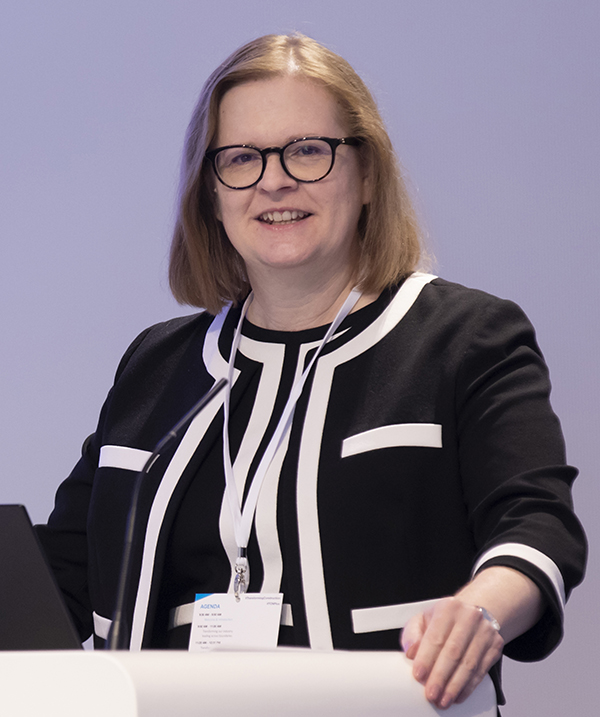For a sector that employs more than 2 million people in the UK, change is overdue in construction. The answer lies in businesses taking responsibility for their long-term future, says Jacqui Glass.
The business of building has been dogged for decades by high risks, high pressure and tiny margins. The procurement process is trapped in a vicious circle, with clients fixating on the lowest capital cost as the only indicator of value.
At the same time, firms respond by cutting costs to stay competitive, which ultimately leads to worse outcomes, poor-quality assets with higher maintenance costs over the life of the building.
Many in construction recognise that entrenched business models and a dominant logic focusing on short-term returns to shareholders jeopardise the long-term survival of firms. They need to keep up with rapid technological advances, but their business models often only allow incremental innovation rather than disruptive, game-changing ideas. They feel their hands are tied, and the risks of breaking out of this cycle are too great.
To compound matters, other players in the built environment are snapping at the heels of traditional construction firms. The way we construct things is shifting, and there is an increasing role for designers and architects – should they choose to seize it – to extend their traditional role beyond what we build to ‘how’ we build. That can deliver benefits to clients and improve outcomes, clarifying the roles and responsibilities through the supply chain. It also poses a threat to construction firms. They must ask themselves: if designers settle the ‘how’ upfront, then what are we bringing to the party?
Significant opportunities to capture value are out there. But how do construction firms take themselves forward? That depends on the construction projects, people or organisation. There is no one industry model to impose on businesses. But there are several considerations that leaders need to take on board.
Look at the industry, look at the business
First, contractors need to understand what the future looks like in the construction industry as a whole, and once they have a clear sense of that, they need to look at what value they deliver to the process.
They might look to a firm like Mace Group, which is among those leading the way with innovation in robotics and manufacturing processes. Developing the UK’s first rising factory at Plot No.8 of the East Village at the Olympic Park in London, the firm displayed incredible innovation. Built around a six-storey tower, the ‘jump factory’ is an indoor construction site that reduces noise and safety risks while preventing weather delays and can build floors at unprecedented speeds. The method has transformed the group’s approach to residential housing projects.

“Currently many contractors don’t have a sense of who they are and what they are for – what is the purpose of construction and the contractor who make it possible?”
The future almost certainly relies on the greater efficiency, productivity and value creation afforded by the range of modern methods of construction (MMC). However, currently many contractors don’t have a sense of who they are and what they are for – what is the purpose of construction and the contractor who make it possible? Opportunism has kept these firms afloat through economic cycles but eroded their identity and obscured their core capabilities.
They need to look at themselves and understand how their key capabilities, assets and processes create and capture value and map that to a business model that can deliver. For example, they might ask: Do our specialisms suit a future where construction relies increasingly on manufacturing production methods? Strategic insight has been a weakness in our industry; looking past the opportunistic approach and having a clear vision is about where you want to be and identifying the opportunities to work to.
Second, this introspection requires time, energy and skills. Firms need competent leadership and board capabilities to devote time to developing and delivering on the strategy. We see that privately-owned companies have more capacity to explore their business models while it is harder for plcs, which need to feed their shareholders and devote their energy to chasing diminishing margins.
Change procurement
The way that clients procure also has to change. Procurement has evolved to minimise risk to the client throughout the process but funnels risk down the supply chain. Solutions such as integrated project insurance and alliancing – recently applied to Sheffield Hallam University’s new campus design – pool risk, encourage collaboration, and incentivise partners. Of course, such options are realised more easily when the client is experienced and knowledgeable.
It is challenging to adapt business models, taking large risks when there isn’t necessarily an expression of demand from the market. Clients need to recognise that the different ways of buying things have different outcomes. Firms and industry bodies such as RIBA and ICE should be there to help inform and educate them. Understanding how you build before you decide what to build informs the client’s procurement decision-making and determines the contractor’s role in the process.
“The way that clients procure also has to change. Procurement has evolved to minimise risk to the client throughout the process but funnels risk down the supply chain.”
For example, does the client opt for an entirely bespoke building or a kit-of-parts approach? If the client recognises that a more modular build, which it knows planners will approve, can be assembled efficiently and on time, it de-risks the whole process for the client. That may appeal more than a bespoke and expensive design and build project.
Collaborate with the broader industry and academia
Relationships in the industry can be adversarial and distant: contractors have jealously guarded knowledge and R&D in the past. That approach is changing, and collaboration – particularly on the larger megaprojects – is increasingly prized.
Parts of the industry could learn from an emerging infrastructure project ecosystem.
It is an ecosystem because there is a growing community of clients, contractors, consultants, universities and institutions – teams and individuals – who have got to know and trust each other. They have worked together in different roles across different projects. These networks, embodied by the likes of Project 13 and i3P, are gradually lifting the capabilities, knowledge, experience and ability to deliver.
Firms also need to capitalise on the benefits of working more closely with academia and bridge some of the disconnects that inhibit those gains. Timelines are often at odds when industry wants things cheap, perfect, and ‘right now’, whereas academics like to establish processes and systems and gather data. A better understanding of where, when, and at what depth to engage academics will yield better outcomes. And moving to a more mission-led approach can reduce the commercial risks to firms, while supporting academic engagement.
For some, the actions contractors must take will seem bold, they are not without risk. But the industry at large can no longer bury its head in the sand: there is no guarantee of a long-term future without pledging time to it.
Jacqui Glass FCIOB is professor in construction management at the Bartlett School of Sustainable Construction.
Comments
Comments are closed.












I disagree entirely with the perceptions outlined in this article. It is apparent that the author is completely idealised by academia and short of knowledge of real-world construction project delivery. The principle that the industry wants things cheap is completely at odds with what actually happens. Procurement is a lot more complex than defined in this article with many factors contributing to the actual purchase of materials. Does the intended vendor provide products that align with specifications, can they be delivered within an allotted timeframe, supporting documentation, test reports, validation, ISO compliance, warranty etc. This cannot be simply generalised as cheap and therefore perceived as low quality.
The fundamental process of how we design projects has already changed in the last decade from the “traditional” approach. It would appear that this is not working judging by the underlying myths exposed in this article and therefore returning to the traditional approach may in fact be the answer.
The industry relies too much on digital solutions and less on the experience and skill of the engineers. On many projects had we used skilled experienced engineers they would know from empirical knowledge the things that needed to be challenged which may include client specifications that are incorrect for the intended application, the wrong type of materials, impractical design approaches and so on. Many of our engineers only have an academic background and therefore lack the empirical knowledge so vital in delivering a well-designed fit for purpose building.
The Children’s Hospital in Edinburgh for example; the client specs were apparently incorrect and therefore had the design team included experienced engineers they would have known to challenge the specs. I am running out of space here to comment on the Business models; many of which have already changed to adopt digital solutions and yet the answer there would have been better to manage the digital solutions to suit the business model.
We need to look at what has actually happened to the industry in the last 15 years and ask ourselves whether digital solutions have introduced unnecessarily high costs which need to be recovered from the project deliverables. Okay, I have drifted a bit from the core message of this article but if we look deeper at what used to be to where we are now we will see that engineering is now more admin oriented and less design and these overhead costs must be recovered. In conclusion, academia is not the answer in the fact that just introduces an additional element of admin and overhead costs.
The solution sought cannot be generalised as set out in this article.